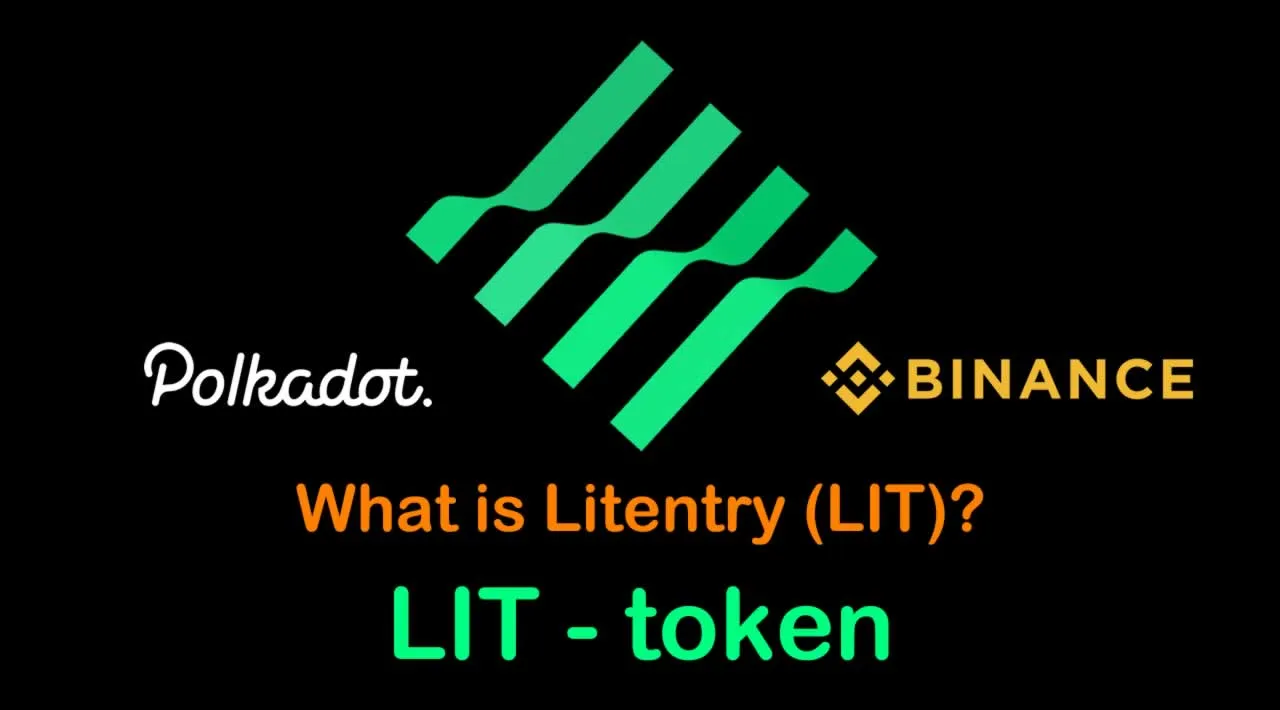What is Litentry (LIT) | What is Litentry token | What is LIT token
Litentry enables user to aggregate identities from other chains, features an identity matching and identity staking mechanism, as a whole it consists of decentralized identity and user activity data aggregation infrastructure.
With an aggregated cross-chain identity, blockchain projects could offer dedicated graded services/functions according to the identity’s quantified data. For example, if a new project knows that an account is a Polkadot validator, and it spends hundreds of DOTs on another Parachain for half a year, then the project could directly gift this specific user some token to start to play with, or send him/her an attractive offer of the new DeFi product, or accredit him to be a validated voter.

Identity Matching is a blind matching-making with random anonymous identities picked from on-chain identities pool, and candidate identity data is processed by the substrate off-chain worker. The network sends the matchwinner’s DID as a matching opportunity back to the matching buyer. The buyer does not have access to other identities in the identities pool but only the matchwinner’s DID, thus match buyer pays the LIT token(Native Token on Litentry Network) in exchange for a matching opportunity.
Identity Staking is the process that an identity owner sends the snapshot of their identity document and DID to the identities pool of blockchain, and authorize the read permissions to the validator node, thus getting staking and matching rewards in the following blocks. The identity document is encrypted and saved in a decentralized database like IPFS or on-chain key-value store, and DID is stored on chain.
With identity staking and identity matching, we construct the basic economic model of the identity-based network without selling user data. Not only identity stakers and matching buyers benefit from the matching market, but the DApps connected to Litentry also get match fees as identity contributors. In this way, Litentry encourages more attendee into the future of Web3.
For more information on Identity Staking and Identity Matching, please read our lite paper.
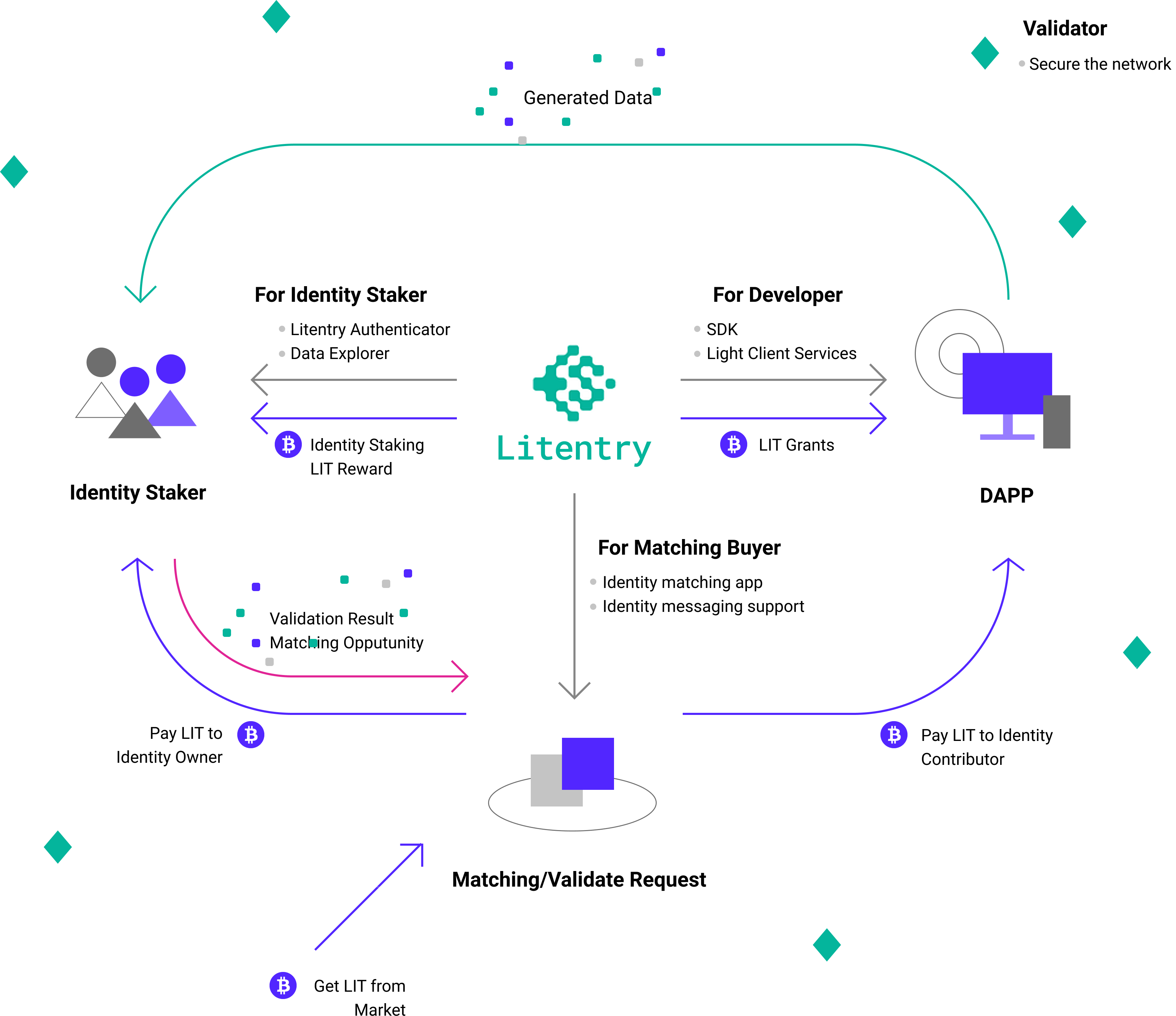
Litentry has a technology-driven team in Germany, the Founder and an early contributor are from Parity, it has a strong engineering team with Ethereum project background.
Community Governed
The credit computation algorithms, the data origins, and the identity registrars are all governed by the LIT stakeholders, the relationship of community and community members could be recorded on chain and generated community credit, and further all the governance credit will contribute to voting power.
Fully Decentralized
Litentry Network processes DID verification, aggregation, and computation requests from a service demander and returns a trustable result. The process will be implemented by a random set of validators in the network in a fully decentralized and transparent way.
Blockchain Powered
Litentry is built on Substrate, which inherits great features and the best technologies in the Blockchain industry. Litentry aims to be the Parachain of Polkadot Network and benefit from the thriving cross-chain ecosystem and shared security.
Privacy Focused
Privacy preservation is the fundamental of Litentry network and we do not want to breach the pseudo-anonymity of blockchain networks. Litentry supports an incognito on-chain data processing.
Token Economics

Why we need cross-chain identity for Web 3.0
An identity represents a collection of data of a natural person. An actively generated cross-platform identity provide credit for accessing dedicated services, for example, a good Alipay credit could get a micro loan or free borrowing services. A cross-platform identity could also makes the accounts management easier like Facebook login enables single sign-on for different applications.
But the data is not only collected actively by user inputs, it is sometime passively collected by the scripts monitoring user behaviors, and it is always leveraged by data brokers without notifying users.
Pseudo-anonymous blockchain networks come in and prevent the identity profile being monitored, but it also eliminates the benefits of having a cross-platform identity. Without a cross-platform identity, the user experience of identity management on DApps would not be as competent as Web2.0 Apps, and most importantly, it is hard to validate and accreditate identities, which will lead to the following problems:
- A common problem for new blockchain projects is how to attract real users. Blockchain projects always use air-drop, but projects cannot prevent a user creating multiple accounts to get the rewards. For example, Uniswap’s generous token gifting to all the historical liquidity providers does not have any differentiation of the users.
- A missing point in the DeFi world is credit loan. Without credit or financial history of users, financial institutes need to charge a collateralized deposit for issuing a micro loan or flash loan.
- In on-chain governance of a Proof of Stake(PoS) network, the voting power is mainly decided by the distribution of tokens, the network will need sophisticated algorithms to make sure the voting power is not controlled by individual major stakeholders.
The activities of an on-chain identity nowadays are more than token transfers and it could reflect the characteristic of the identity. For example, to know if a user is a long term liquidity provider on Uniswap we could check the liquidity deposit and withdraw actions, or to know if a user is active as an on-chain governance participant on Polkadot by checking its data of nominating and voting for democracy. In addition, the blockchain runtime tends to have more complex states, like tweeting in a decentralized blog system that has its record on-chain. A transaction should more properly be called an “extrinsic”, which indicates any message from the outside world that would change the state of the blockchain. Once combined with different accounts across different chains, we may derive more information about the identity behind these accounts and solve all the above problems.
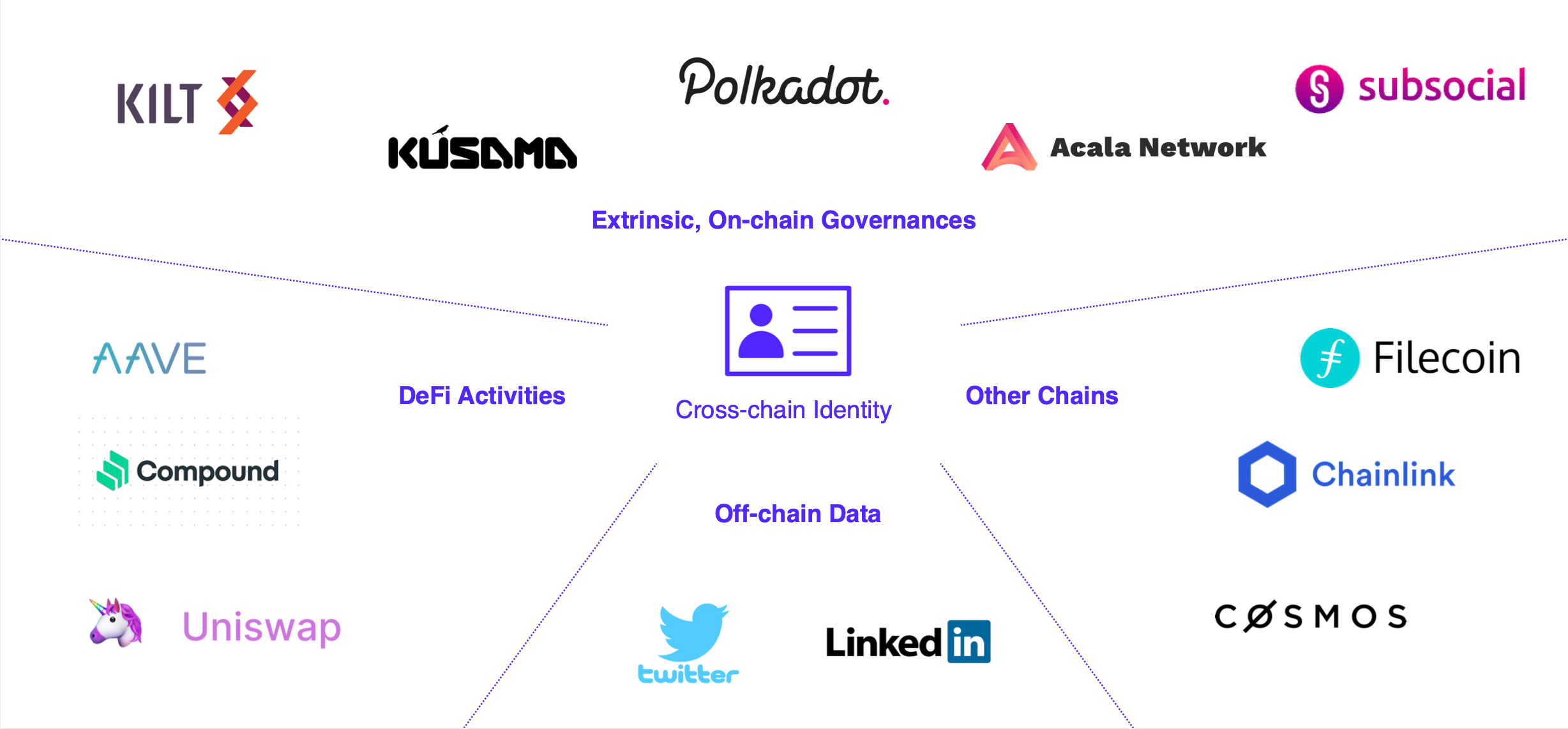
Cross-Chain Identity
That is the reason we need a cross-chain identity, a user picks identities from different chains to be linked together, then on-chain data of linked identity are collected and quantified, and eventually a user could provide a cross-chain identity as a first-order logic for different networks and DApps. With such a cross-chain identity, blockchain projects could offer dedicated graded services/functions according to the identity’s quantified data. For example, if a new project knows that an account is a Polkadot validator, and it spends hundreds of DOTs on another Parachain for half a year, then the project could directly gift this specific user some token to start to play with, or send him/her an attractive offer of the new DeFi product, or accredit him to be a validated voter.
The cross-chain identity as a first-order logic enables validation and accreditation of identities and also could provide single sign-on with linked identities.** It completes the missing part in the pseudo-anonymous networks and is essential for the development of DApps in Web3.0.**
So we see the bright future of a cross-chain identity, but why not just create a web app and link the data in a central server?
To create a credit according to the user data is a centralized behavior in the banking world. But we want to make it in a transparent, decentralized, and trustless way. The network participants have the right to adjust the following mechanism and thus prevent sybil attacks:
- How to link an account from a different chain to a Litentry account.
- How to evaluate a specific credit, and which parameter to use.
- From which resource should the parameter be fetched.
Here is an example to show a process to get the “long liquidity provider” credit of Uniswap and record it in Litentry Network. Litentry is a network built with Substrate and will joined Polkadot as a Parachain.
1. The community decides how to link an Ethereum account to a Litentry account, for example, to sign a message by the private key of the Ethereum account, the message is the combination of the Litentry account ID and the current block number of Litentry network. In the future this could be implemented by a cross-chain message with XCMP.
2. The community agrees upon an accreditation function on Uniswap by voting, to take the longest liquidity duration and the ETH value as the parameter, and compute a credit to show if a user was a long-term liquidity provider based on these two parameters.
3. Currently, Ethereum is not bridged to Relay Chain yet, the community needs to upload the functions to get the parameters, for example, which HTTP endpoints to use for querying on-chain data. To make the process decentralized and prevent a single point of failure, variant resources should be used, e,g Ethplorer, Etherscan. Once XCMP is enabled and Ethereum is bridged to Polkadot, the computing process could directly happen on the Parachain.
So once a user links his Ethereum account on Litentry network and requires a credit on Uniswap. The off-chain worker of the validator will automatically query and process the data on the appointed smart contract. If all the validators agreed upon the result (a boolean or a number), a credit with a timestamp will be generated and be recorded on the chain.
As mentioned in the above example, If the target account is also on a Parachain, The account linking and accreditation process leverages Polkadot’s XCMP and could be significantly simplified and get even better performance.
By using the blockchain to build a cross-chain identity, we create a transparent, decentralized, and trustless way to provide identity as a first-order logic service.
And why not just use one Polkadot account for all the Parachains?
On Polkadot, the accounts are generated by a seed’s derivation paths, a key pair on different blockchains has different representatives (SS58 Address). So in theory a user could use one account to interact with all the Parachains. But for security reasons, it is not safe to have a single key-pairs for every Parachain, it is like the same password for different web apps.
Another important reason is there is still a lot of blockchains systems running out of Polkadot, we want to connect all of these chains, the by our protocol, so that Litentry could also link accounts from other chains which have not bridged to Polkadot in a trustless way, and implement a identity “Oracle”.
Why not use Polkadot’s native identity module? Why create an independent Parachain?
Firstly, as a Parachain it is possible to offer incentives for users to create a cross-chain identity, to have flexible token economics not be limited by the price of DOT.
Secondly, the current identity module on Polkadot aims to offer a basic identity for on-chain governance, it has some limitations like high fee, offline contact, no automation judgment, and limited fields. In our opinion, Polkadot is focusing on providing security for Parachains, and the aforementioned trustless on-chain governance for identity linking and credibility should mostly happen in a Parachain. And that’s why Litentry comes in and tries to solve it.
In addition to that, Litentry is not limited to the identities in the Blockchain world, we will build the protocol and related tools that help users collect user’s off-chain data from web apps with privacy protection. Once we connect identity across chains and off-chain apps, the user would have more dedicated control on identity, and be able to use more dedicated services/functionalities of networks and applications on Web3.0.
LIT Binance Launchpool Farming Guide
Litentrys ERC20 token $LIT is listed on Binance Launchpool. Binance users can stake their $BNB, $DOT, and $BUSD tokens to farm $LIT over 30 days, starting from Jan 28th 2020, at 0:00 AM (UTC).
$LIT is the native utility token of Litentry, which is used in the DID aggregation protocol as a fee for credit/reputation computation, reward for indexed identity databases, stakes for being an identity registrar, or collaterals for DeFi lending services.
This step-by-step guide is for the Litentry community and Binance users to participate in LIT Binance Launchpool farming.
- Go to Binance Launchpool, log in to your account with your email/phone#, password, and 2FA details.

2. You’ll see the BNB pool, DOT pool, and BUSD pool. Select the corresponding pool for the token which you want to stake (we’re using BNB as an example here) and click on Stake Now

3. You’ll see the amount of BNB that you’ve staked, and the amount available for staking. Click on the Stake button to proceed.

4. If you don’t have any BNB, then you can click on Buy BNB to purchase tokens to stake.
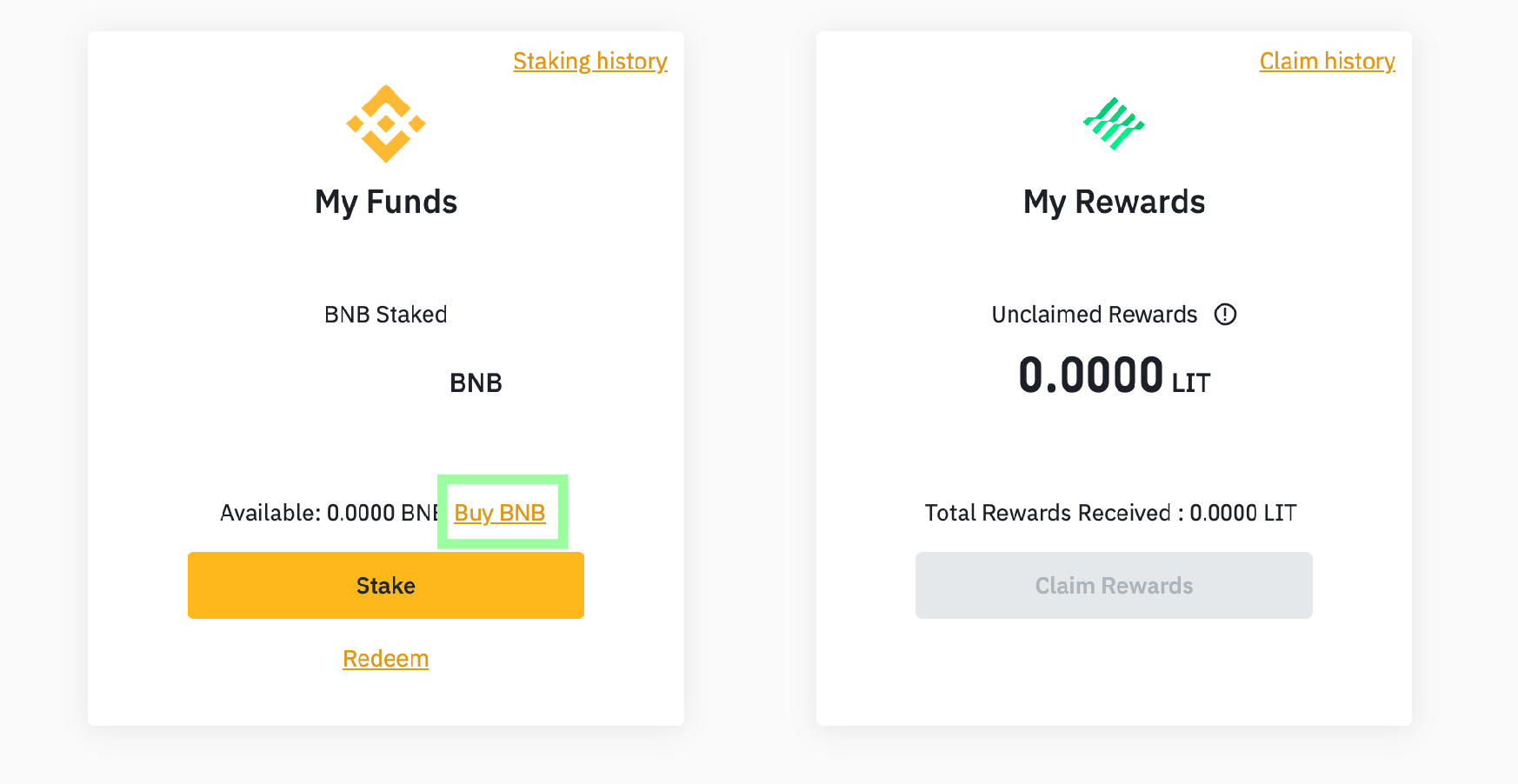
5. After clicking on the Stake button, enter the amount of BNB you want to stake, and click Stake. You can just click on Max if you want to stake your entire BNB balance.
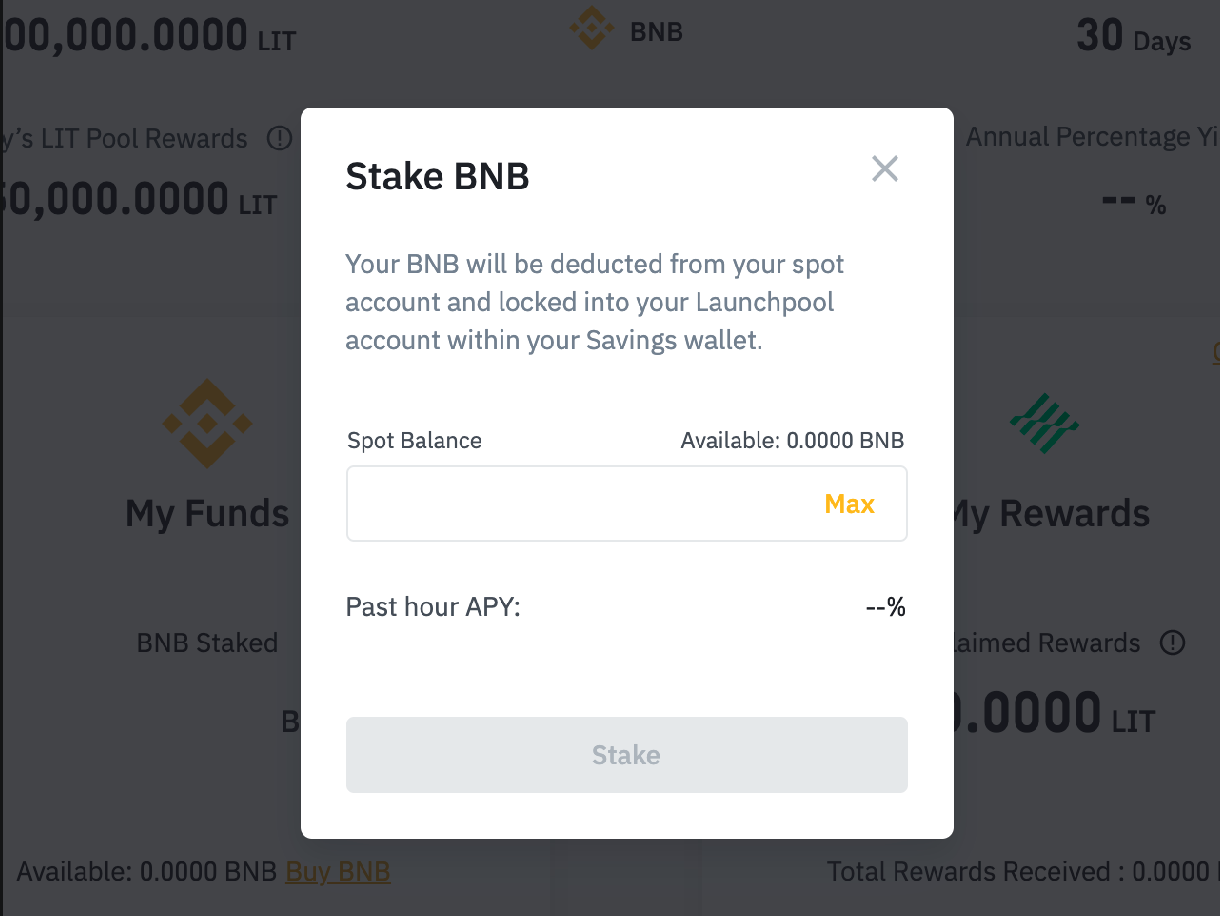
6. You’ll see the updated staking details. The $LIT rewards that you’ve received will appear here once farming begins, and you’ll be able to claim your $LIT tokens by clicking on the Claim Rewards button.

7. If you want to un-stake or change your staking pool, then just click on Redeem and follow the same steps for BNB staking.
That is it! You’ll wait for the farming process to complete once you finished staking. LIT rewards will update every one hour.
How and Where to Buy LIT ?
LIT has been listed on a number of crypto exchanges, unlike other main cryptocurrencies, it cannot be directly purchased with fiats money. However, You can still easily buy this coin by first buying Bitcoin, ETH, USDT from any large exchanges and then transfer to the exchange that offers to trade this coin, in this guide article we will walk you through in detail the steps to buy …
You will have to first buy one of the major cryptocurrencies, usually either Bitcoin (BTC), Ethereum (ETH), Tether (USDT)…
We will use Binance Exchange here as it is one of the largest crypto exchanges that accept fiat deposits.
Binance is a popular cryptocurrency exchange which was started in China but then moved their headquarters to the crypto-friendly Island of Malta in the EU. Binance is popular for its crypto to crypto exchange services. Binance exploded onto the scene in the mania of 2017 and has since gone on to become the top crypto exchange in the world.
Once you finished the KYC process. You will be asked to add a payment method. Here you can either choose to provide a credit/debit card or use a bank transfer, and buy one of the major cryptocurrencies, usually either Bitcoin (BTC), Ethereum (ETH), Tether (USDT)
Step by Step Guide : What is Binance | How to Create an account on Binance (Updated 2021)
After the deposit is confirmed you may then purchase LIT from the Binance exchange.
The top exchanges for trading in Litentry are currently Binance, CoinBene, Uniswap (V2), MXC.COM, and PancakeSwap.
Apart from the exchange(s) above, there are a few popular crypto exchanges where they have decent daily trading volumes and a huge user base. This will ensure you will be able to sell your coins at any time and the fees will usually be lower. It is suggested that you also register on these exchanges since once LIT gets listed there it will attract a large amount of trading volumes from the users there, that means you will be having some great trading opportunities!
Top exchanges for token-coin trading. Follow instructions and make unlimited money
☞ Binance ☞ Bittrex ☞ Poloniex ☞ Bitfinex ☞ Huobi ☞ MXC ☞ ProBIT ☞ Gate.io ☞ Coinbase
Looking for more information…
☞ Website ☞ Explorer ☞ Explorer 2 ☞ Source Code ☞ Social Channel ☞ Message Board ☞ Documentation ☞ Coinmarketcap
🔺DISCLAIMER: The Information in the post isn’t financial advice, is intended FOR GENERAL INFORMATION PURPOSES ONLY. Trading Cryptocurrency is VERY risky. Make sure you understand these risks and that you are responsible for what you do with your money.
🔥 If you’re a beginner. I believe the article below will be useful to you ☞ What You Should Know Before Investing in Cryptocurrency - For Beginner
⭐ ⭐ ⭐The project is of interest to the community. Join to Get free ‘GEEK coin’ (GEEKCASH coin)!
☞ -----CLICK HERE**-----**⭐ ⭐ ⭐
Thank for visiting and reading this article! I’m highly appreciate your actions! Please share if you liked it!
#blockchain #bitcoin #crypto #litentry #lit
